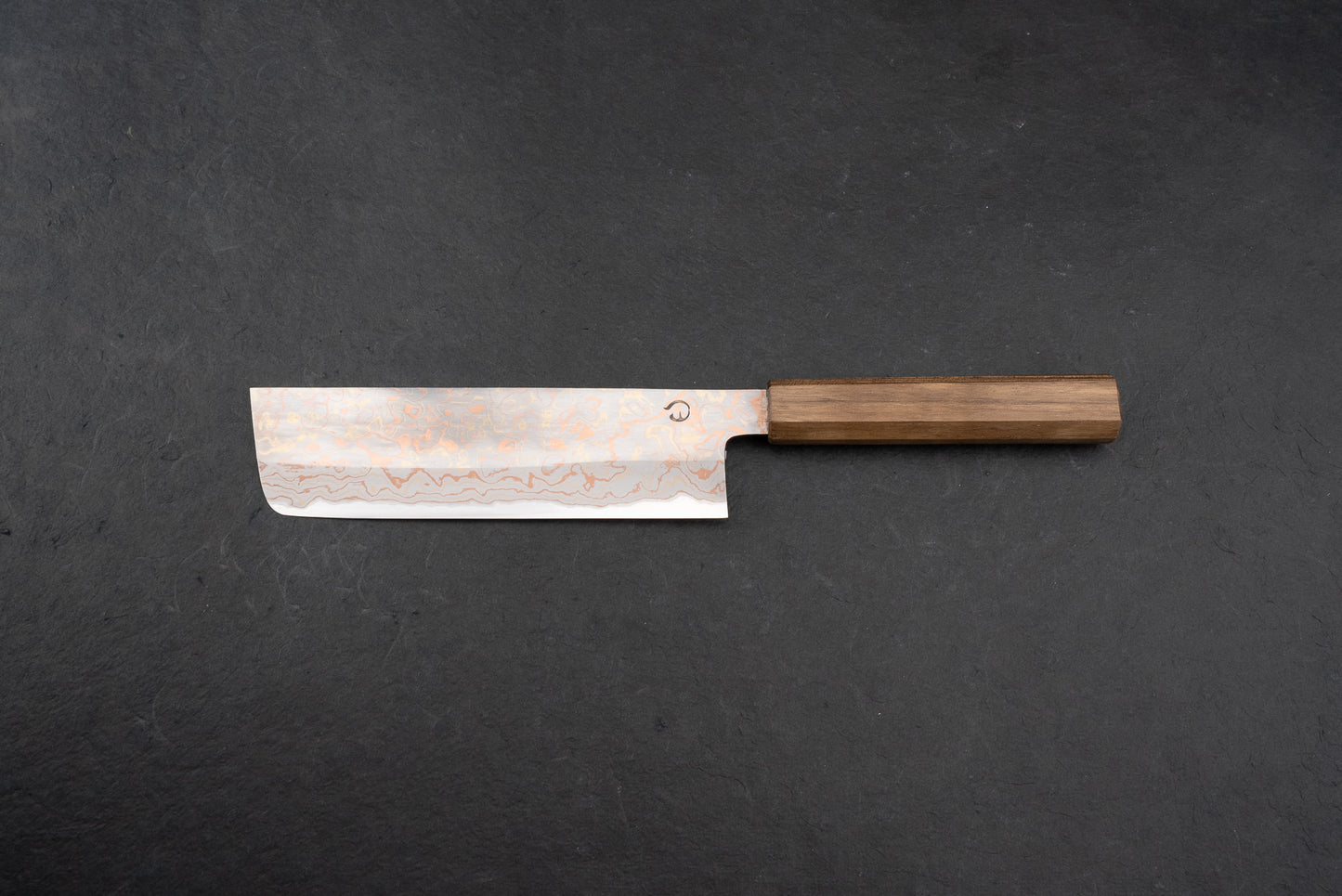Mutsumi Hinoura V-toku Rainbow Damascus Nakiri 180mm
Mutsumi Hinoura V-toku Rainbow Damascus Nakiri 180mm
Couldn't load pickup availability
Mutsumi Hinoura is a prolific knife maker from a renowned blacksmithing family in Sanjo, Niigata. Born in 1981, he is already a promising prospect to become one of Japan’s best knife makers.
Mutsumi-san's knives are deceptively simple at first but reveal his talent upon closer inspection. While the blade is quite hefty with a thick spine and body, he tapers it down to the edge beautifully. This construction allows it to cut very smoothly without becoming too delicate. He follows family tradition by working with traditional high-carbon steel known as shirogami; while this steel can rust easily, it sharpens beautifully and takes an edge that would put Wolverine’s adamantium claws to shame. He has been experimenting with new steels like V-Toku as of late, and we’re excite to see more innovation from his workshop.
The Japanese-style octagonal wood ‘wa-handle’ is an elegant highlight that elevates this knife to something truly special. It focuses the mass of the knife into the blade, allowing it to do most of the work for you, with little effort required to wield the knife effectively.
| Shape | |
|---|---|
| Blade Length | | |
| Blade Height | |
| Blade Thickness Above Heel | |
| Weight | |
| Steel Type |
Rust Prone ⓘ
This knife can rust, click to learn more.
|
| Edge/Bevel | |
| Handle | |
| Made in | |
| Blacksmith | |
| Made in |
A note about measurements: Handmade Japanese knives can vary in their dimensions, so these measurements are only an example.
Knife Care
Knife Care
Shipping and Returns
Shipping and Returns
We aim to ship your order within 1 business day at Knifewear, if there is a hold up, we'll aim to let you know and give you a timeline.
We offer $3 shipping on orders over $100* anywhere in Canada and $200* to customers in the USA. We ship worldwide, and offer up to the minute rates from our shipping partner DHL.
*Konro Grills and some other larger items are excluded from the free shipping offer.
How do I make a return on an online order?
No worries, we've got you sorted. Head over to https://knifewear.com/returns and follow the prompts.
Can I pick up my order Curbside / At the store?
Absolutely, as long as all the items you are looking for are in stock at the location you want to pickup from, you'll be able to select that at the checkout. If one or more items aren't at your preferred location we are happy to ship it to you.
Request Additional Info
Request Additional Info




